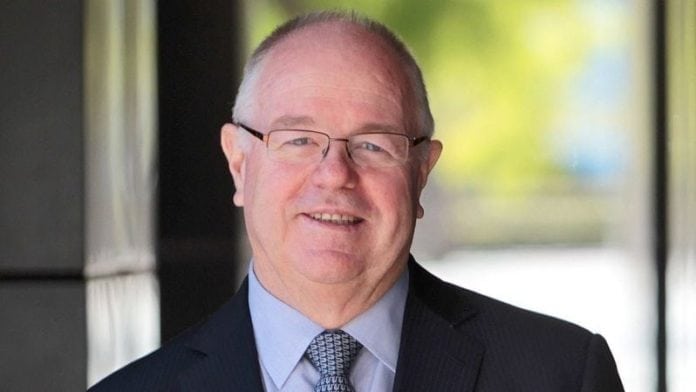
THESE are strange times for investors with an interest in the gold market. Look no further than the new record high in the metal last month. It comes during a time of dollar strength, a phase when gold might be expected to weaken. Analysts say central bank buying — chiefly by China — is the main driving force behind the rise in gold’s fortunes.
There are reasons to fear the bubble-like risks of dedollarisation in China, if that is what’s happening. While gold’s status as a safe-haven investment is supported by geopolitics, it’s not supported by investors generally. According to World Gold Council data, there was an outflow of $5.7bn from global gold exchange traded funds in February.
On top of this, equities are behaving weirdly. Harmony Gold became a $5bn company in April, a doubling in value in a year. But the world’s two largest gold producers, Newmont and Barrick Gold, have barely responded to the gold price. To underline the point, the gold price gained 13.4% in that time.
“I still do not fully understand what is holding precious metal stocks as they have not managed to test 2023 April-May highs when gold was trading at the $2,050/oz-$2,080/oz level,” wrote Rashad Hajiyev, an analyst for Edinburgh-based RM Capital Markets. While Hajiyev expects “an explosive rally out of the blue”, he acknowledged it was becoming difficult to justify the lag in equity valuations.
How then might the intrepid investor tackle gold’s rise? Most of the gold counters on the JSE have run fairly hard, suggesting there’s little value on offer. Harmony is up 38% on the GDX (Market Vectors Gold Miners index) which is up 3.8%; Gold Fields is 13% higher and AngloGold Ashanti up 24%. But for something different, investors might want to consider some of the small- and mid-cap gold miners, especially those operating in West Africa.
Political discounts
There are several reasons this makes sense. African gold miners often trade with a geopolitical discount, despite having some of the world’s best geology. West Africa attracts the most gold exploration spend after Australia and North America. An estimated 79-million ounces of gold has been discovered in West Africa in the past decade, the most of any world region, says S&P Market Intelligence.
Endeavour Mining, listed in Toronto, has been a standout beneficiary. Run by former Gold Fields CEO Ian Cockerill, the company recently unveiled the Tanda-Iguela prospect in Ivory Coast which it described as the most important find in the region in years. About 400,000 ounces in annual production has been forecast from the mine, making it a sizeable addition to Endeavour’s production this year, which was guided to between 1.13-million ounces and 1.27-million ounces.
Since January, shares in Perseus Mining, a Sydney-listed firm, have gained 20.4%. In five years, during which time gold production has grown from about 150,000 oz a year to 500,000 oz a year, the share is up 400%
Commissioning the mine, which is part of Endeavour’s five-year 10-million ounce to 20-million ounce exploration programme, is the perfect riposte to recent management turmoil. CEO Sébastien de Montessus was fired in January following allegations of misallocated monies. But Berenberg Bank analyst Richard Hatch thinks it’s time to move on. “We believe it is time to look through the noise,” he says in a recent note. He predicts production growth, rising free cash flow generation, falling leverage and increasing shareholder returns from 2025 for Endeavour. Shares in the firm have fallen 17% in the past 12 months.
One of the benefits of investing in West Africa’s gold sector is the number of companies accelerating production in a rising gold market. Since January, shares in Perseus Mining, a Sydney-listed firm, have gained 20.4%. In five years, during which time gold production has grown from about 150,000 oz a year to 500,000 oz a year, the share is up 400%. This week Perseus declared final a takeover offer for fellow-Australian miner OreCorp, which owns an exploration property in Tanzania.
Perseus has tended to favour M&A over capital projects but since 2021 attention has turned to yield. In that year the company announced a maiden dividend. CEO Jeff Quartermaine has promised “a more aggressive approach to capital management”. In the past two years, the company has returned $100m.
Shares in Sydney-listed West African Resources gained roughly a third this year on the basis of production success at its 230,000 oz-a-year Sanbrado gold project in Burkina Faso. The company is an interesting test case of the political risk-return conundrum; jihadist attacks in the east of the country have been a blight. In the end, however, money speaks louder.
“We go to Africa because the projects are better,” said CEO and executive chair Richard Hyde in an interview with the Australian Financial Review. Certainly lenders haven’t been put off by Burkina Faso’s troubles. In June, Sprott Resource Lending Corp and Coris Bank International agreed to fund $265m of the $430m required to build West African’s second mine, Kiaka, a deposit near Sanbrado the firm bought from Canadian miner B2Gold. The balance of Kiaka, which will take West African’s production north of 400,000oz a year from 2025 for 10 years, will be funded from cash and internally generated cash flow.
We go to Africa because the projects are better – Richard Hyde, CEO, West African Resources
Returning to the question of political risk, national security was top of Hyde’s agenda when in October his company announced plans to sign a memorandum of understanding with Orezone of Canada on improving protective measures for their neighbouring properties in Burkina Faso, as well as “drive synergies” on renewables and grid power, procurement and other supply chain issues.
Perils in small caps
Obviously, there are many perils with smaller companies. Look no further than Hummingbird Resources, a UK-listed firm whose valuation dropped to a near-record low this year after it failed to ramp up its $120m Guinea mine, Kouroussa, on time. In July 2023, Hummingbird poured first gold from the mine for which it had raised $55m from Coris Bank. The loan took net debt to $122.8m as of the third quarter, a consequence of Kouroussa’s difficulties. A year earlier Hummingbird’s flagship Mali mine, Yanfolila ran into production problems.
Hummingbird CEO Dan Betts pledged to a three-year repayment plan starting with $77m this year. In December 2023, however, the company returned to the market amid ramp-up delays at Kouroussa with a $30m equity placement of which $25m was cornerstoned by investment bank CIG, taking its stake in Hummingbird to 45%. Hummingbird also said it would hedge 15% of its forecast gold production for 2024 in an effort to provide some top-line security.
Unfortunately, the company has fallen out with its main mining contractor on Kouroussa. Investors fled the stock after mining stopped. Hummingbird also reported it met with Coris Bank. The bank was most likely concerned by events. The hovering abilities of hummingbirds are well known: acrobatic flyers that can skilfully manoeuvre through the air. Gold companies with no cash and heavy debt balances tend to have wings of lead.
A version of this article was first published in the Financial Mail.










